Designart Tokyo transforms the city into a museum of creativity
Over the course of 10 days (until 30 October 2022), Designart Tokyo presents global design highlights through a series of exhibitions involving global creative talent and traditional Japanese craft
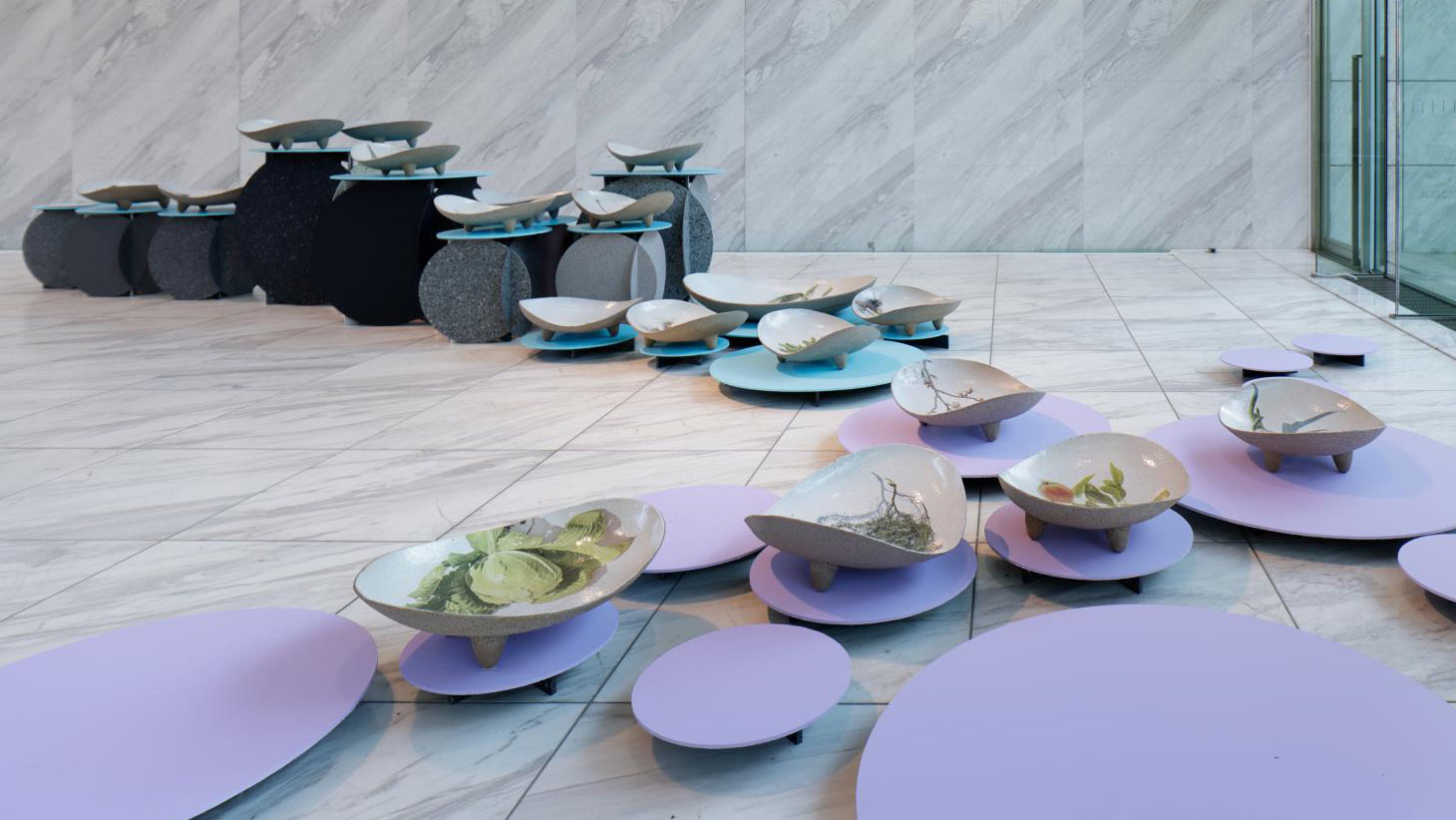
Together. This simple word poignantly underpins a scattering of close to 100 new exhibitions as part of Designart Tokyo (until 30 October 2022), the city’s biggest annual design and art festival. Designart kicked off across seven neighbourhoods - from the galleries, hotels and flagships of Omotesando, Roppongi and Shibuya to a century-old viaduct in Hibiya - just days after Japan finally relaxed its strict border controls, making it the first time in three years the event has been accessible to those outside Japan (Sweden’s Claesson Koivisto Rune and Ronan Bouroullec are among a flurry of designers who traveled to the city).
Inspired by the idea of transforming the Japanese capital into a museum for ten days, the festival fluidly spans the creative spectrum, from interior and product design to fashion, modern crafts and art. Sustainability and recycling are core themes which shine out among many of this year’s 92 exhibits. Highlighting a new post-pandemic era, festival co-founder and creative director Akio Aoki of Miru Design, adds: ‘In design, there is an increase in bright and colourful items, breaking away from the minimalist thinking of the past in Japan. This year’s exhibition also focuses more on Asian creators, with exhibitions and sessions that will serve as a springboard for creating a base for design relations in Asia.
A highlight among countless events is likely to be Saturday’s Pecha Kucha, with designers including Studio Swine, Claesson Koivisto Rune and Jin Kuramoto, making presentations in a Shibuya skyscraper.
Woven throughout the event’s DNA is the theme "together", as festival co-founder Mark Dytham of Klein Dytham architecture, explains: ‘After being apart for so long it was almost natural to work with the theme of “together”. Together has many reasons: yes, it is the coming together of everyone in Tokyo, Japan and from overseas, but it is also core to Designart with the many collaborations, the confluence and the celebration of design and art.’
Designart Tokyo 2022: the highlights
Next Circulation
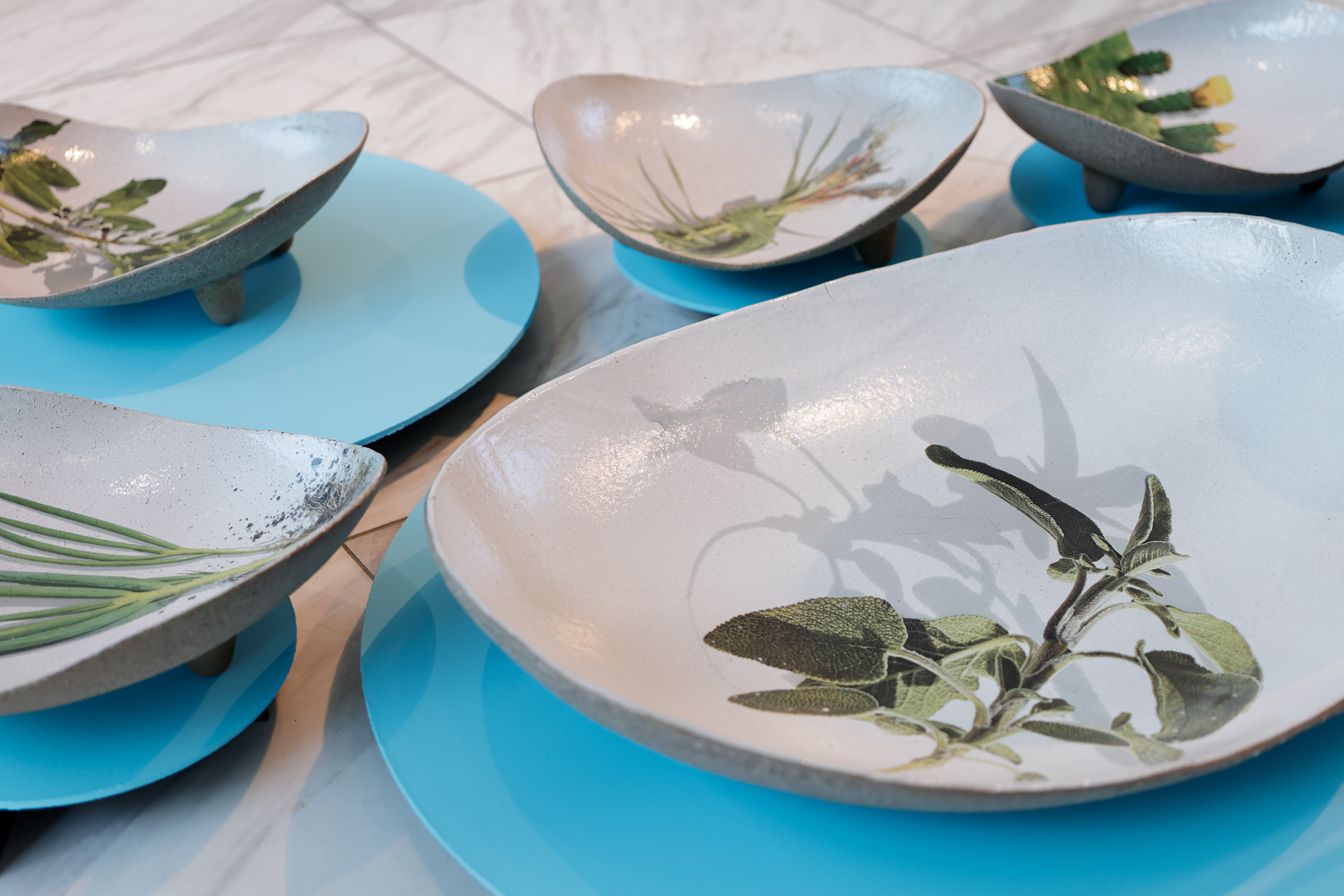
Seeds of Heritage by Orna Tamir Schestowitz, from Next Circulation
Inspired by a quest for the innovative and the sustainable in uncertain modern times, nine exhibits are centre stage at Next Circulation at World Kita-Aoyama Building, the hub of the festival. Presented on circular platforms of recycled fabric in a space designed by Satoshi Itasaka, exhibits include Tree Stone, a sculptural stone table with organic lines and sharp textural contrasts, by France-based Kaaron Studio and Okurayama Studio, which quarries ancient Date Stone rock from its own mountain in Miyagi Prefecture where Isamu Noguchi once sourced materials. Other highlights include Yuma Kano’s ForestBank, which taps into the possibilities of forests as a new material, resulting in products created from a kaleidoscopic medley of small trees, bark, seeds and soil in an acrylic resin; and the contemporary explorations of the future of plastic by LandLoop Art Project, with creations 3D-printed using wood flour and PLA.
World Kita-Aoyama Building, 3-5-10 Kitaaoyama, Minato-ku
Receive our daily digest of inspiration, escapism and design stories from around the world direct to your inbox.
Wood craftsmanship at Ariake
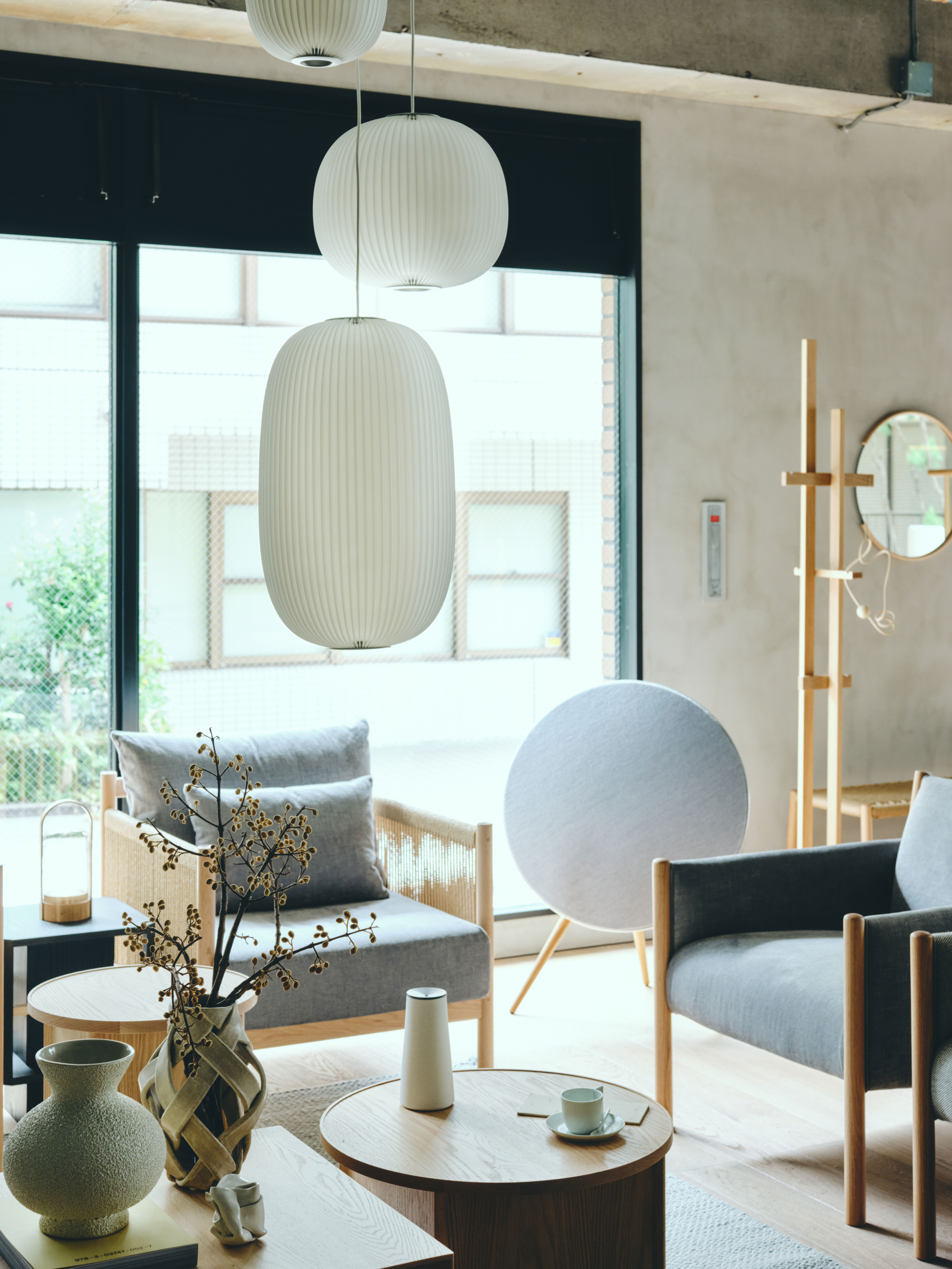
Ariake, the Saga-based furniture brand, launches its latest collection in Japan at Hirata Chair Studio, a new space designed by Keiji Ashizawa. The collection, first unveiled in Milan, includes the origami-esque complexity of white lantern-style lights by Le Klint; the clean-lined utilitarian structure of Neri&Hu's bedroom collection; and the soft wood curves and reflective surfaces of Inga Sempé’s coat stand and mirror. Woodwork is also in the spotlight at atmospheric Kaisu, with its 2 days of Ishinomaki Laboratory exhibition, including furniture made by seven creatives – from Wataru Kumano’s geometric coat pegs to Norm Architects’ paper cord-wrapped 90° Bench – during a two-day workshop at Ishinomaki Laboratory.
Hirata Chair Tokyo, #103, 4-1-15 Minamiaoyama, Minato-ku
Clay and Design: Carl Hansen & Søn and Artek

Carl Hansen & Søn
At Carl Hansen & Søn Flagship Store Tokyo, the gentle forms and nuanced shades of ceramic creations by artist Yuka Ando are peacefully scattered among the iconic furniture collections, from vases and bowls to art pieces. The Artek flagship just off Omotesando also has a small but perfectly formed exhibition exploring the dynamics between wood and clay in their collaboration with Heath Ceramics, including the clean-lined Tile Tables.
Carl Hansen & Søn, Aoyama Artworks 1/2F, 2-5-10 Jingumae, Shibuya-ku
Artek, 5-9-20 Jingumae, Shibuya-ku
Contemporary artworks
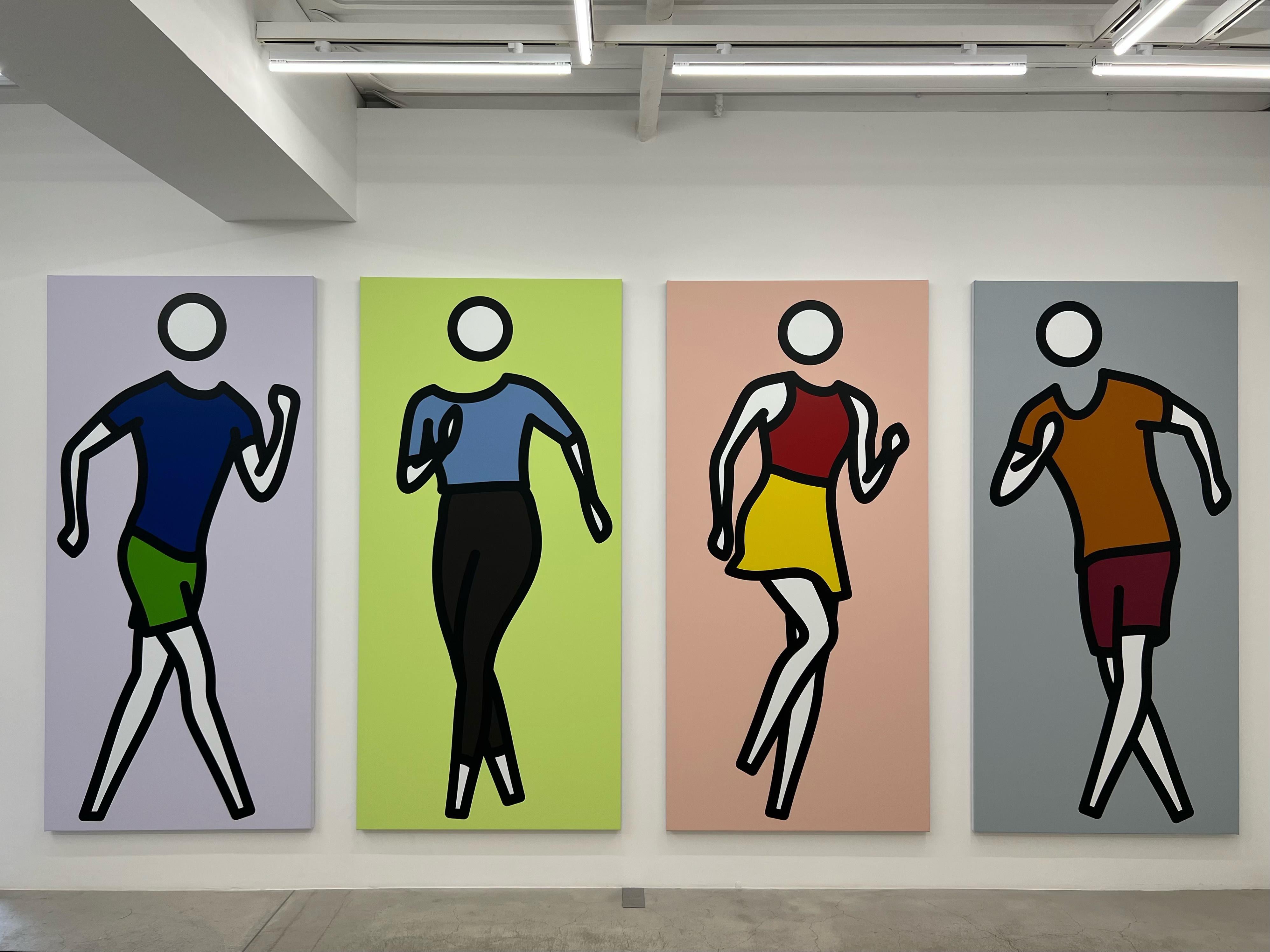
Creations by big name artists are scattered in intimate venues across Tokyo. Among them is a playful dance-inspired solo exhibition by Julian Opie, with eight bright paintings and five video works with spirit-lifting in-synch moves at Maho Kubota Gallery; Simon Fujiwara’s existential deep-dive into a cartoon character inspired by fairytales, fantasy and animation in his Who the Baer exhibition at the iconic bubble-style Herzog & de Meuron-designed Prada Aoyama flagship; and teamLab’s epically-named “Continuous Life and Death at the Now of Eternity” – a visual real-time feast of ever-blooming flowers at Volvo Studio Aoyama.
Designart Gallery
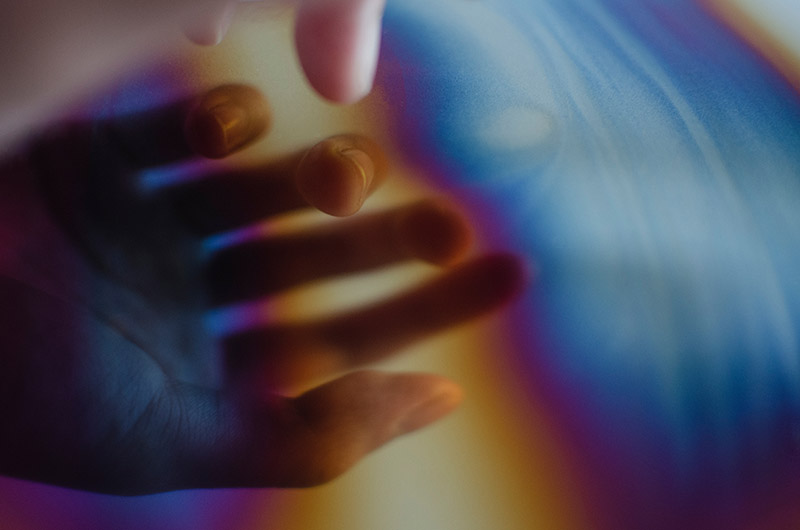
It’s all about young talent and contemporary innovation at Designart Gallery at HZ Shibuya, where works are showcased by a raft of under-30s. Stand-outs include “between seen and unseen” by messagingleaving, a Taipei-based creative practice by Chialing Chang. An eloquent dialogue between nature and design, metal and light, poetry and reflections, it includes the rainbow-hued edges of fire-tarnished surfaces of stainless steel alongside organically-layered brass lighting, all complemented by evocative poems written by Hikari Osanai. Other highlights include the minimalist geometric creations of Singapore-based Karyn Lim, who collaborated with Takeo Paper to create her foldable Transformation Bags in robust paper form, using colour combinations such as forest green and pink. Meanwhile, new material frontiers are explored by Sozai Center – more precisely, the waste from apple juice manufacturing, which has been transformed into a paste and coated onto the surfaces of sculptural tables.
Designart 15-4-3 Udagawachō, Shibuya-ku
The Future Eternal
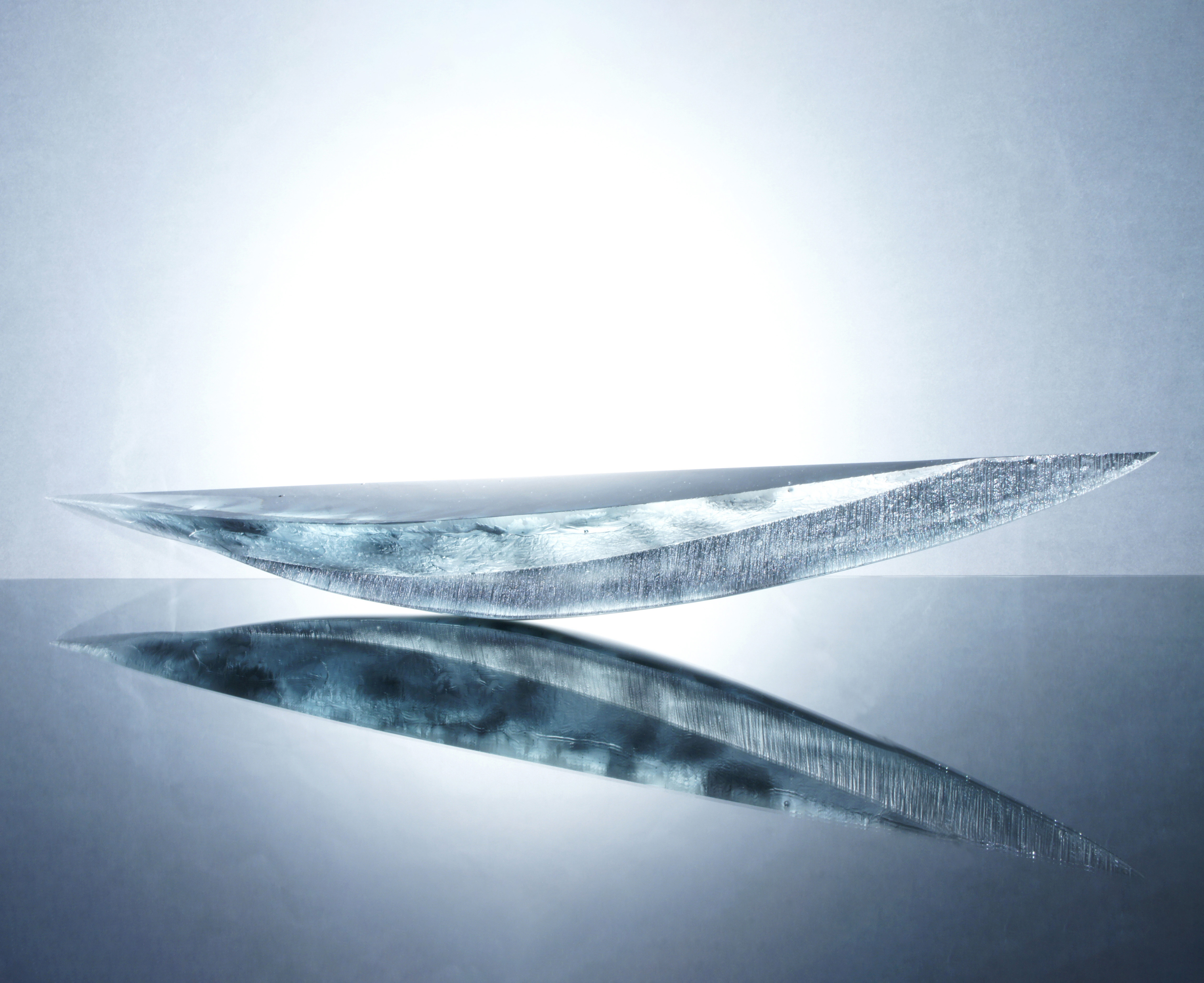
Border / crescent 06 (2018), by Isao Uemae
A new generation of contemporary Japanese aesthetics shines brightly at The Future Eternal, an exquisite exhibition of around 20 young artists, whose timeless conceptual works are deeply rooted in traditional materials, from bamboo and glass to hinoki cypress and clay. Taking place at the intimately atmospheric gallery A Lighthouse called Kanata, the creations explore the delicate spot where art transects Japanese craftmanship – as reflected in the dynamism of a shard-like piece of glass (once part of an old school TV screen) by Isao Uemae; the organically-tarnished patina and soft lines of Kodai Suga’s cast bronze sculpture; the stretched-toothpaste-like texture of a glass creation by Shohei Yokoyama; and the abstract lacquer flowing like water over rocks by Shoko Taruma.
A Lighthouse called Kanata, Kasumicho Terrace 6F, 3-24-20 Nishi-Azabu, Minato-ku
All day place Shibuya

A raft of sensory events inspired by the theme “Feel Hotel Together” are unfolding at the latest buzzy new Shibuya hub: all day place hotel, which was opened by UDS earlier this year. In addition to a scattering of Louis Poulsen light installations are bespoke scent designs for different spaces and four guestrooms – themed on the colours green, pink, purple and yellow – transformed into otherworldly spaces. Among them? Hako Mori – meaning Forest Box – a room packed with tree-like scents and cascading plants. Other events range from DJ music to live painting performances by blind artist Masaki Taniguchi.
all day place 1-17-1 Shibuya, Shibuya-ku
Planted Air: Garance Vallée for Perrier-Jouët

Soft curves in natural earth tones and organically-shaped reflective mirrors define the flow and form of Planted Air, a playfully immersive installation created by French artist and architect Garance Vallée, unveiled for the first time in Tokyo. Inspired by the shades and hues of the Champagne terroir, it’s the second in a series of three creations created by Vallée for Perrier-Jouët, to mark 120 years of its Art Deco heritage – the first launched in Paris earlier this month and the third will be unveiled in Design Miami in December.
Tokyo Midtown 1F Isetan Salone, 9-7-4 Akasaka, Minato-ku
Off-schedule highlights
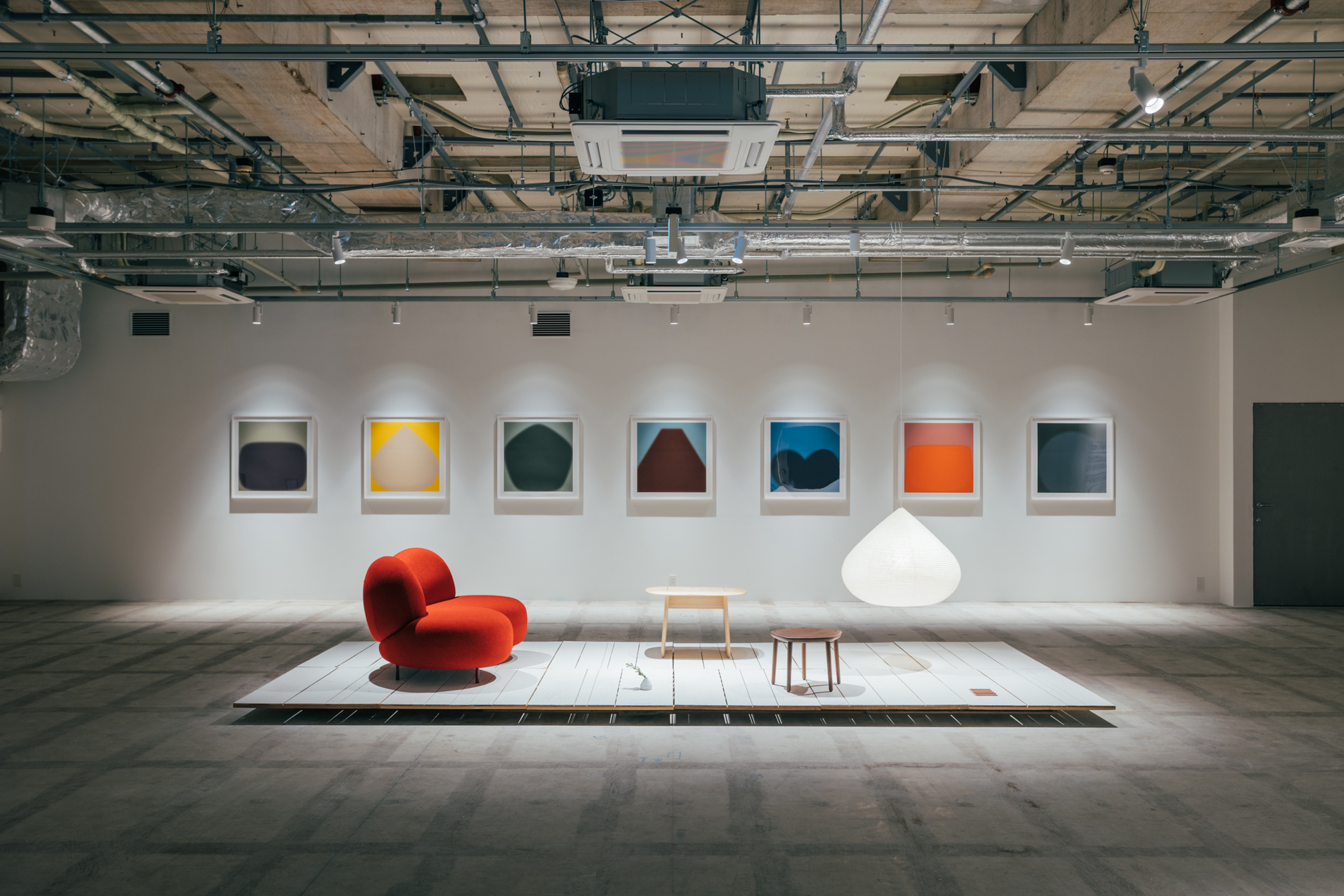
Aimai by Claesson Koivisto Rune
Among a raft of quality events which are not officially part of Designart is Aimai, an exhibition by Claesson Koivisto Rune exploring all things “aimai” - the poetically nuanced Japanese concept of blurred boundaries. Spanning an industrial space at Keshiki Gallery in Nihonbashi are seven artworks in warmly nuanced off-shades whose abstract lines and blurred edges are inspired by seven CKR design pieces (many found at K5 hotel just around the corner, which the studio designed) – from scarlet seating to a beehive-shaped washi lantern.
Licht Gallery is also showcasing Ronan and Erwan Bouroullec’s collaborative works with Tajimi Custom Tiles; Norman Foster’s new Karimoku Case Study collection is unveiled at Karimoku Commons Tokyo; Maruni Tokyo has a pop-up Café Manz, showcasing Cecilie Manz’s EN furniture collection and her CMA Clay range with 1616 / arita japan; and Koyori makes its official Tokyo debut, following its Milan launch earlier this year.
Danielle Demetriou is a British writer and editor who moved from London to Japan in 2007. She writes about design, architecture and culture (for newspapers, magazines and books) and lives in an old machiya townhouse in Kyoto.
Instagram - @danielleinjapan
-
 Usher opens up about breakfast playlists, banana pudding and why a glass tumbler is always on his rider
Usher opens up about breakfast playlists, banana pudding and why a glass tumbler is always on his riderOn the heels of a collaboration with Baccarat, the Grammy-winning singer-songwriter breaks down his entertaining tips. 'Hosting is an expression of how you feel about your guests and also who you are.'
-
 The beauty trends that will define 2026, from ultra-niche fragrances to anti-ageing dental care
The beauty trends that will define 2026, from ultra-niche fragrances to anti-ageing dental careAs we enter the new year, we speak to experts in fragrance, skincare, aesthetics, wellness and more about the trends that will be shaping the way we look
-
 The most stylish hotel debuts of 2025
The most stylish hotel debuts of 2025A Wallpaper* edit of this year’s defining hotel openings. Design-led stays to shape your next escape
-
 Exploring tsu tsu mu: a new exhibition in Tokyo reframes the Japanese way of wrapping anything
Exploring tsu tsu mu: a new exhibition in Tokyo reframes the Japanese way of wrapping anything‘Tsu-tsu-mu’, on view until 13 October 2025 at Matsuya Ginza, reframes the popular Japanese concept of wrapping into a mindset for caring for others
-
 Paper flower gardens and neon mushrooms, Loewe's 'Crafted World' is rooted in heritage, innovation, and child-like wonder
Paper flower gardens and neon mushrooms, Loewe's 'Crafted World' is rooted in heritage, innovation, and child-like wonder'Crafted World' by Loewe is fashion house's first major brand exhibition, opening in Tokyo’s Harajuku district
-
 Alessi Occasional Objects: Virgil Abloh’s take on cutlery
Alessi Occasional Objects: Virgil Abloh’s take on cutleryBest Cross Pollination: Alessi's cutlery by the late designer Virgil Abloh, in collaboration with his London studio Alaska Alaska, is awarded at the Wallpaper* Design Awards 2023
-
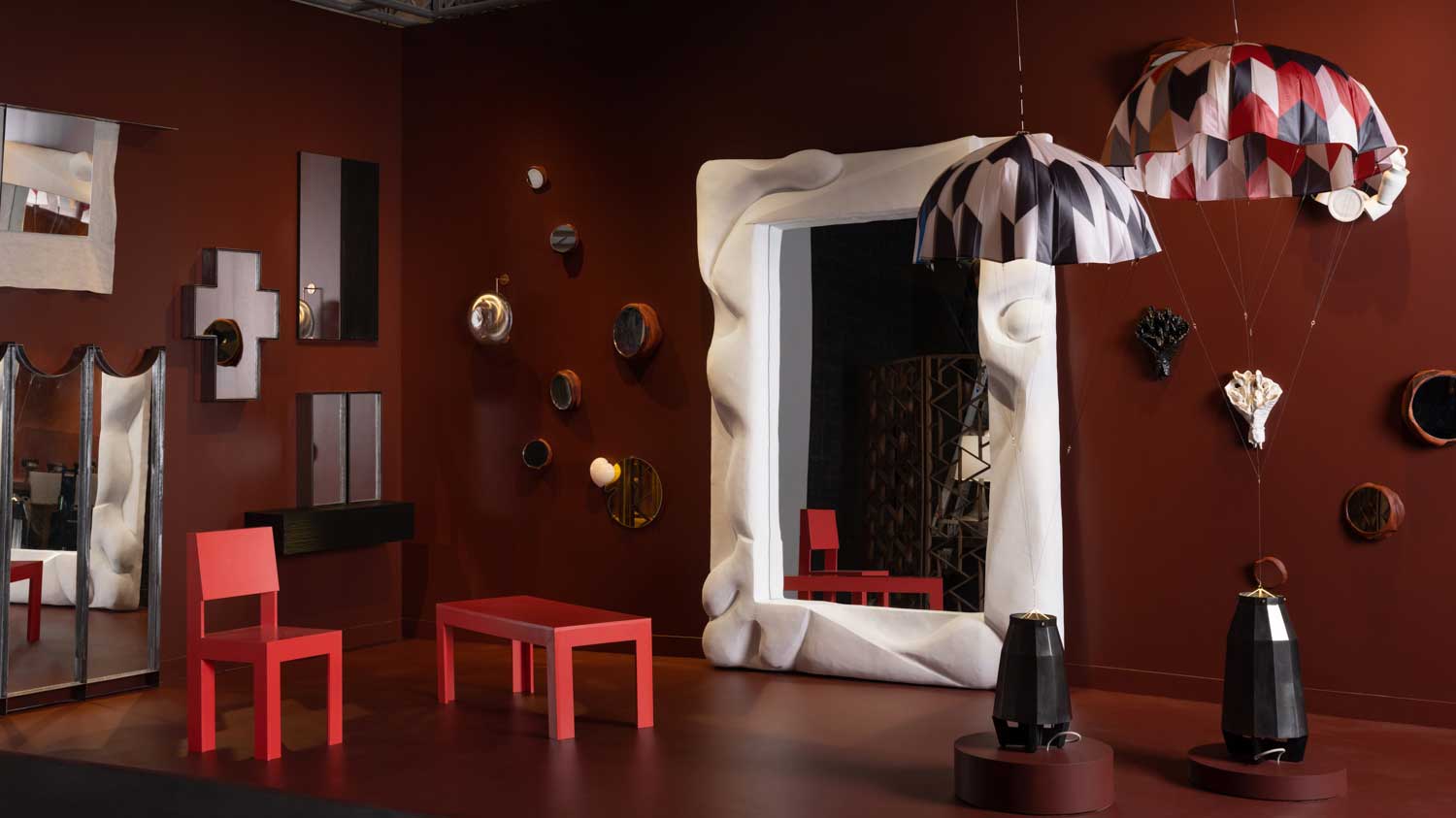 Design Miami 2022: highlights from the fair and around town
Design Miami 2022: highlights from the fair and around townDesign Miami 2022 (30 November – 4 December) aims at ‘rebooting the roots of our relationship with nature and collective structures, ecospheres, and urban contexts’
-
 Salon Art + Design 2022: design highlights not to miss
Salon Art + Design 2022: design highlights not to missWallpaper* highlights from Salon Art + Design 2022, New York
-
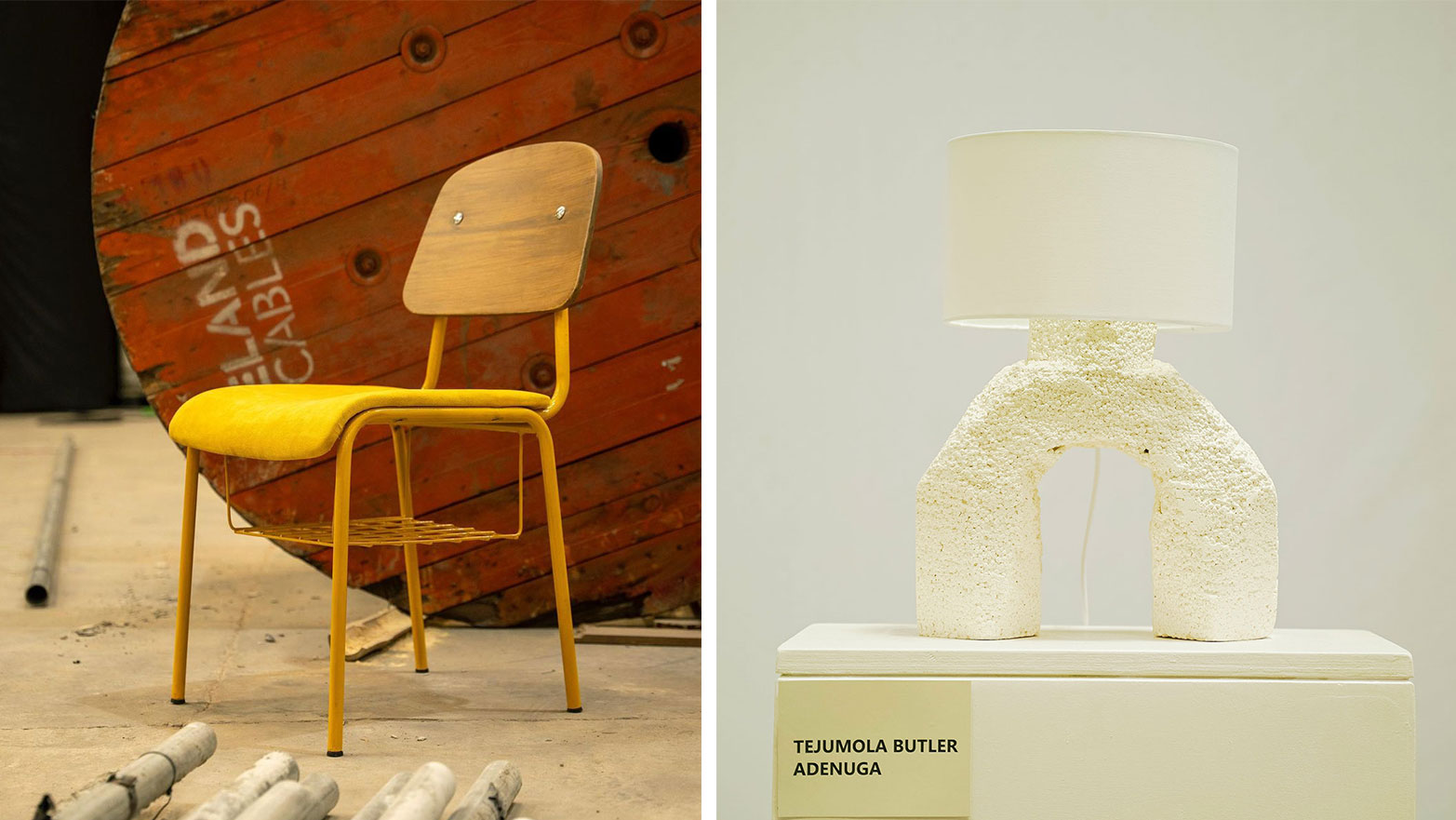 Design Week Lagos 2022 celebrates creativity and innovation in West Africa and beyond
Design Week Lagos 2022 celebrates creativity and innovation in West Africa and beyondCurated by founder Titi Ogufere, Design Week Lagos 2022 is based on a theme of ‘Beyond The Box’
-
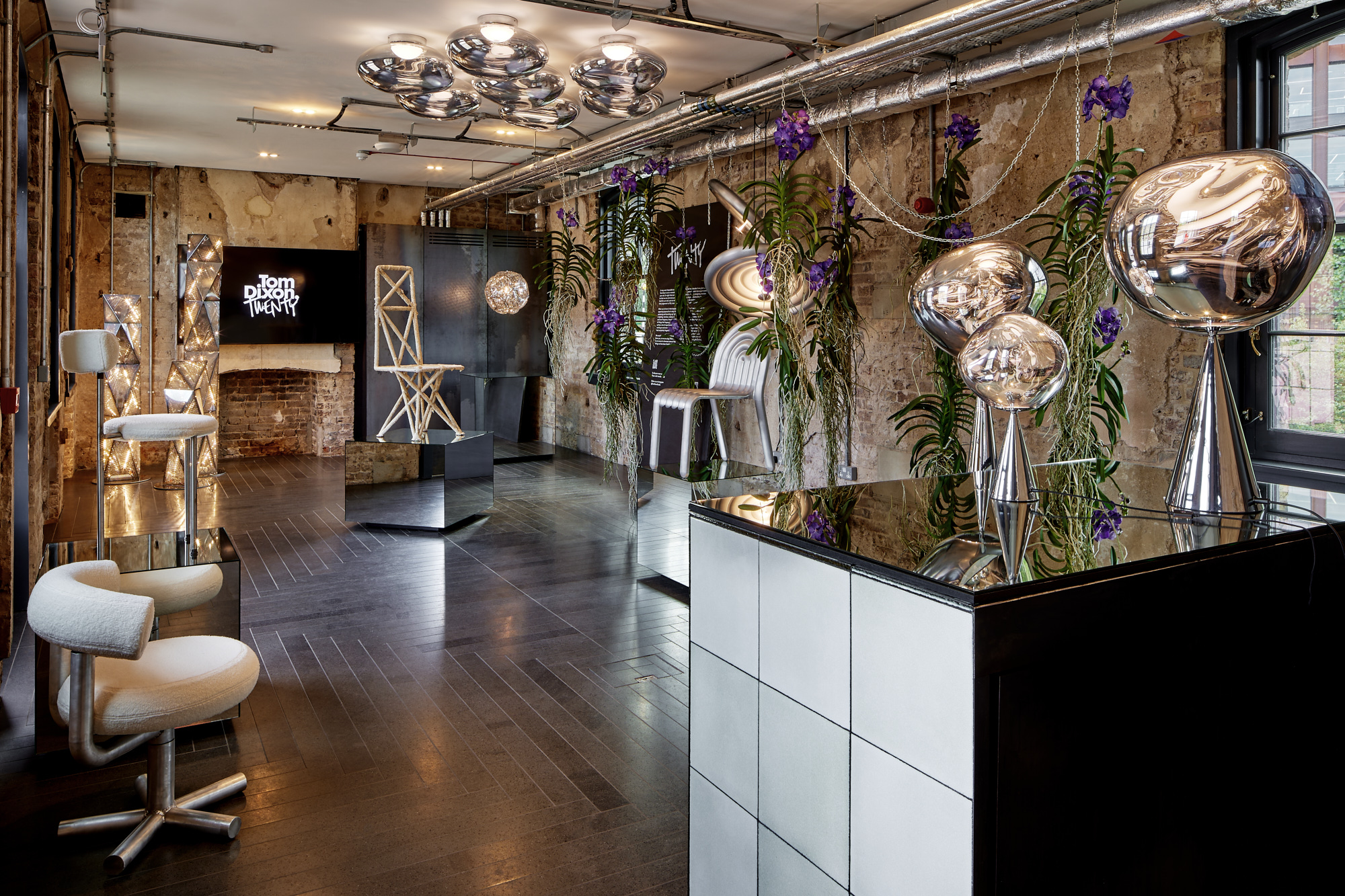 Tom Dixon marks his studio's 20 years with a show of design experiments
Tom Dixon marks his studio's 20 years with a show of design experimentsMushroom, cork, steel coral and more: Tom Dixon showcases an overview of his design experiments as he celebrates his practice's 20 years
-
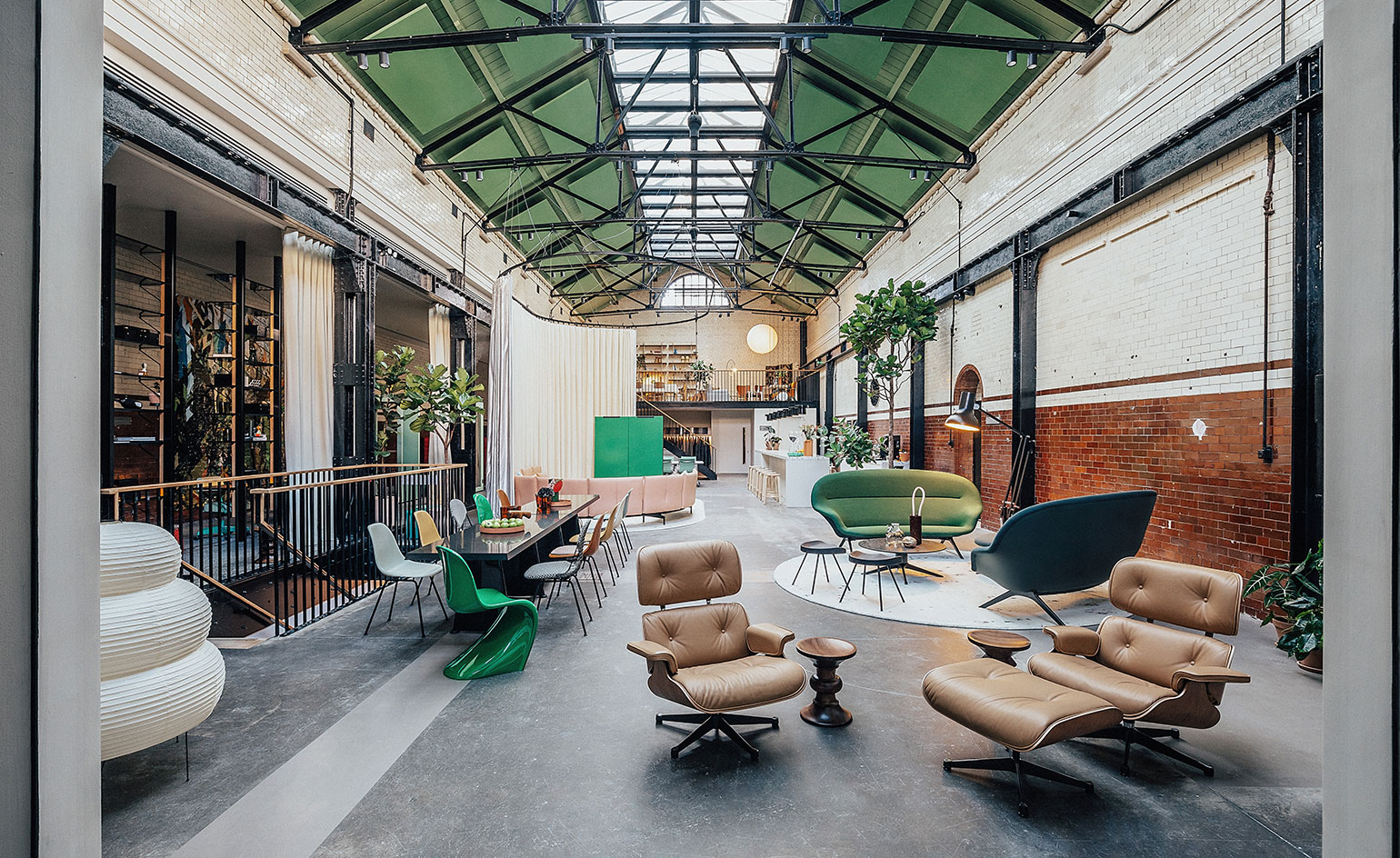 Vitra unveils new London home in the Tramshed, Shoreditch
Vitra unveils new London home in the Tramshed, ShoreditchLondon Design Festival 2022: after a year-long renovation, Vitra opens the door to its new showroom in the heart of Shoreditch